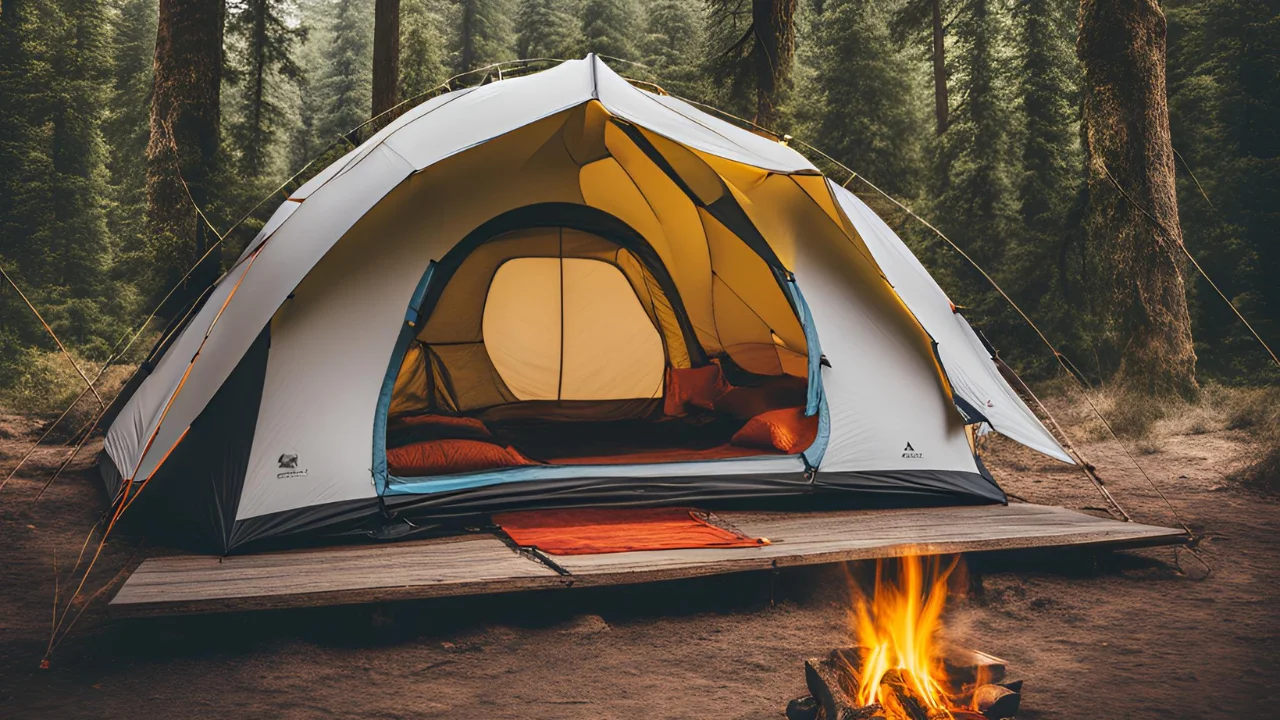
Essential Types of Camping Tents Explained
Choosing the right tent is one of the most important steps when planning a camping trip. With so many options available, it can be tricky to know which one suits your needs best. You can choose the tent according to the person’s number and luggage size. This guide will help you explore the various types of camping tents by shape, season, and camping style.
You can pick your favorite tent for backpacking in the mountains, family camping at a lakeside, or car camping in a national park. We’ll also discuss essential considerations to make sure you pick the perfect tent for your trip.
Table of Contents
ToggleTypes of Camping Tents by Shape and Structure
1. A-Frame Tents

The A-frame tent is a classic for campers who want something simple and utilitarian. Its name comes from the shape of the tent, which looks like the letter A. The structure has two main poles that form the sides and a ridgeline at the top that makes the sloping roof. This design has been around for years and is lightweight and easy to set up. There is not much room to stand up or stretch out, but it is great for solo campers or those who want a compact shelter. Good for dry and calm weather but not for windy or stormy conditions. This is for those who value simplicity, ease of use, and portability over extra space or features.
Pros:
- Lightweight and portable
- Quick to set up and pack down
- Offers decent weather resistance
Cons:
- Limited interior space
- Less headroom than in other tent styles
- It may not be ideal for windy conditions
Best For:
- Solo campers or minimalist backpackers
2. Dome Tents
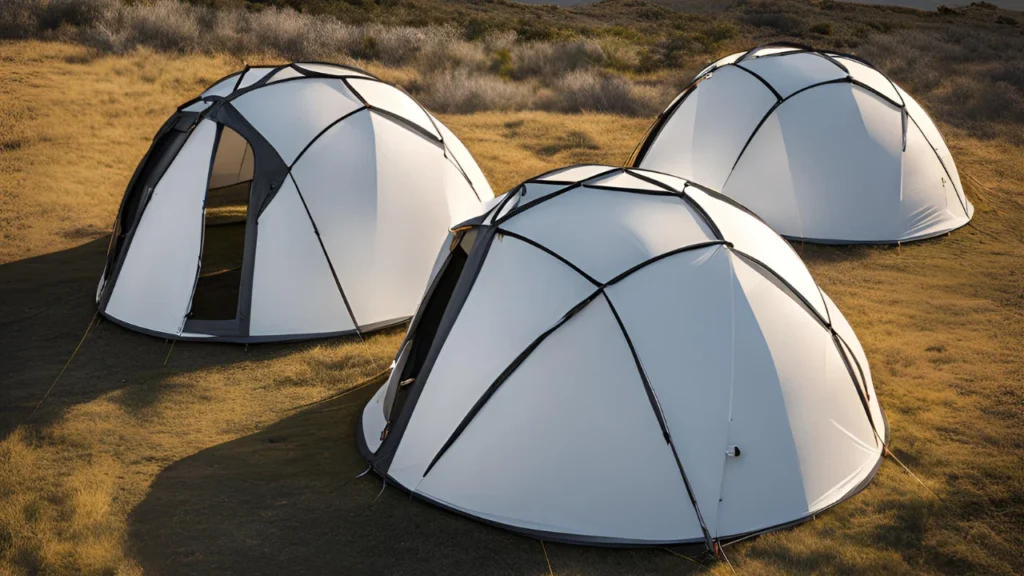
A dome tent features a rounded, arching shape supported by flexible poles that cross at the top, forming a stable structure. It’s easy to set up and offers more headroom compared to simpler tents, making it comfortable for campers. The design also provides good stability in mild weather. However, while it works well in general conditions, it may not withstand extreme weather like strong winds or heavy snow as effectively as more robust tent types.
Pros:
- Stable in moderate wind
- Provides good headroom
- Lightweight and easy to pack
Cons:
- Not as stable in extreme weather
- Limited space near the edges
Best For:
- General camping, small groups, and families
3. Cabin Tents

Cabin tents have nearly vertical walls and are designed to feel like small cabins with plenty of space and height. These are ideal for families or large groups and can sometimes even fit cots and tables.
Pros:
- Spacious and comfortable
- High ceilings for easy movement
- Great for extended camping trips
Cons:
- Heavier and bulkier
- Takes more time to set up
- Not as stable in high winds
Best For:
- Group camping or extended stays
⇒Also Read About Best Sleeping Bag For Snow Camping
4. Tunnel Tents

Tunnel tents use parallel poles to create a tunnel-like structure, providing ample space and stability. Their design makes them suitable for larger groups and family camping trips.
Pros:
- Excellent interior space
- Stable and weather-resistant
- Ideal for group camping
Cons:
- It can be heavy and bulky
- Requires proper staking for stability
Best For:
- Group camping or extended stays
5. Geodesic and Semi-Geodesic Tents
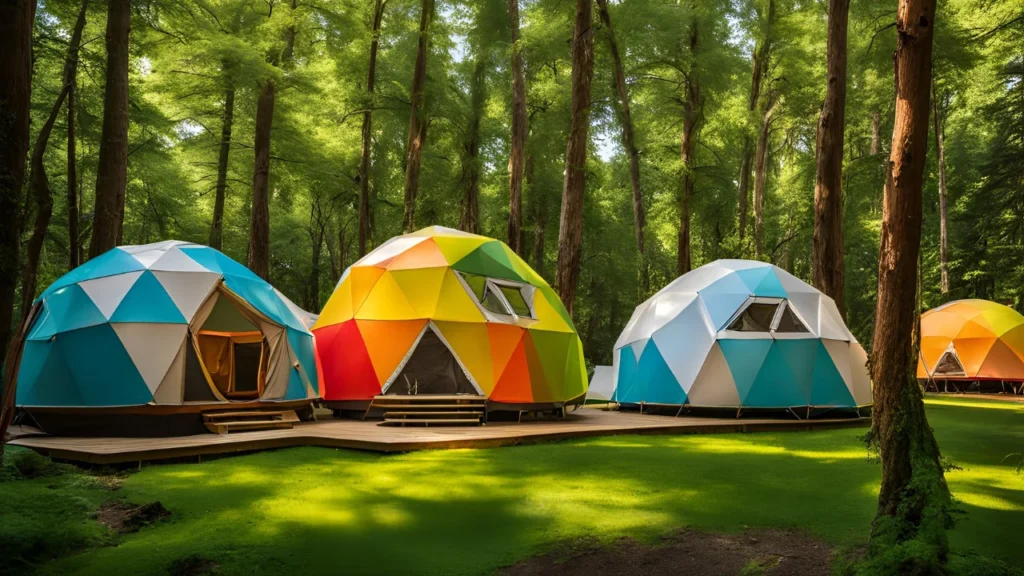
These tents have multiple poles crossing to form a complex, sturdy structure. Geodesic tents are highly stable, often used for mountain expeditions and rough weather.
Pros:
- Extremely stable in extreme conditions
- Durable and weather-resistant
- Suitable for all seasons
Cons:
- Heavy and more complex to set up
- More expensive than simpler designs
Best For:
- Harsh weather conditions, mountaineering
6. Bathroom Tent
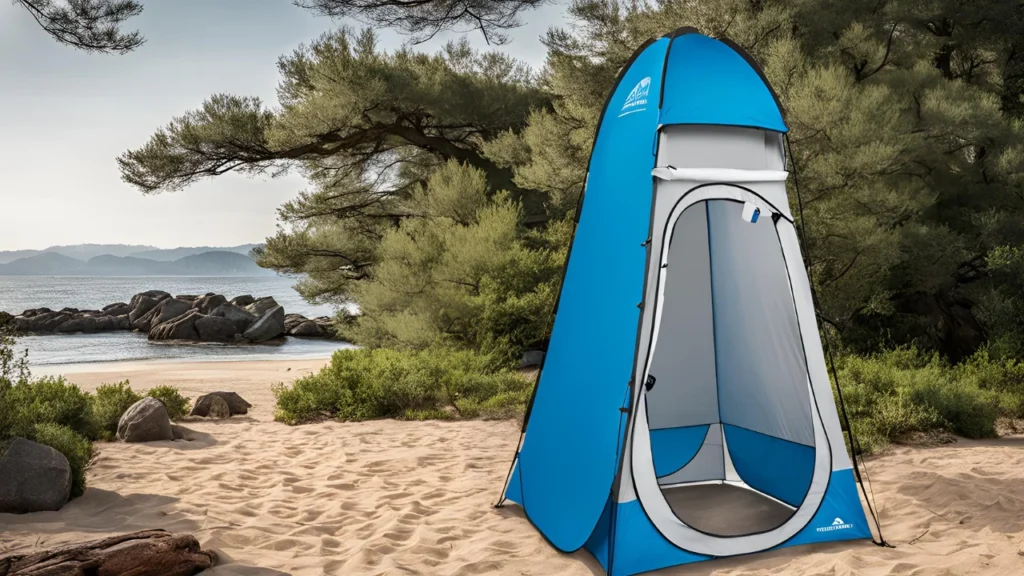
Bathroom tents are small, enclosed shelters that provide privacy for showering or using a portable toilet. They’re useful for family or group camping where additional privacy is needed.
Pros:
- Provides privacy
- Lightweight and portable
- Easy to set up
Cons:
- Single-purpose tent
- Takes up additional space in the gear
Best For:
- Family and glamping trips
7. Canopy Tent
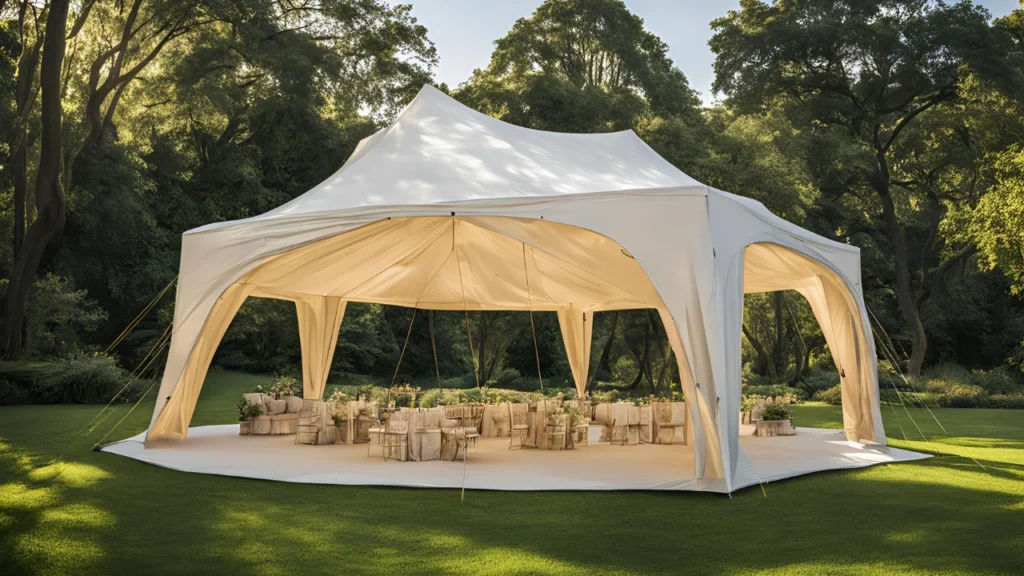
Canopy tents are open-sided shelters primarily used to provide shade and shelter during daytime activities like picnics, beach outings, or festivals. They aren’t suitable for overnight camping.
Pros:
- Provides good shade
- Easy to set up and take down
- Lightweight and portable
Cons:
- Limited protection from weather
- Not suitable for overnight stays
Best For:
- Picnics, beach days, or as a communal area
8. Wall Tent
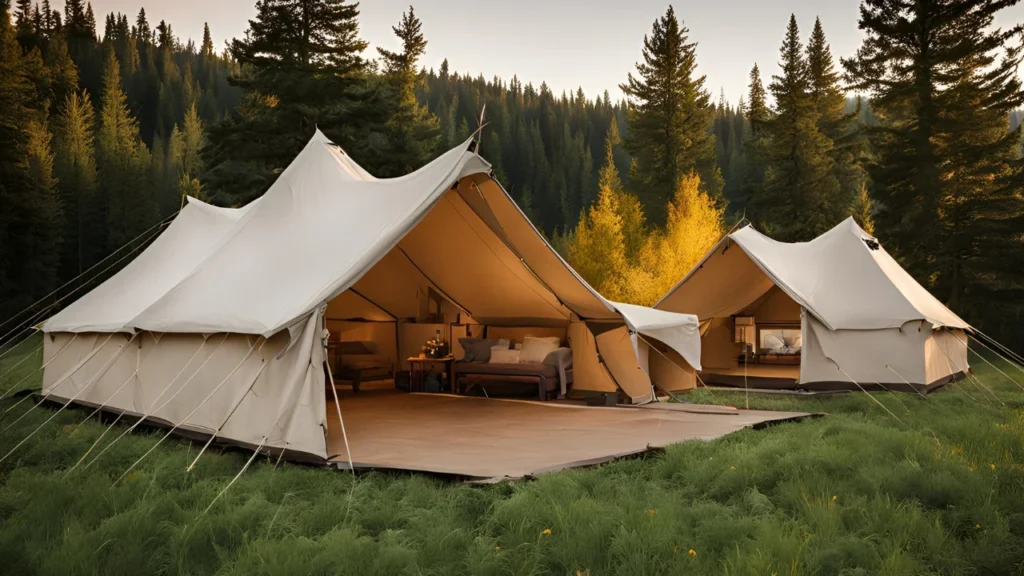
Wall tents are spacious canvas tents with vertical walls, often used for hunting trips, base camps, and extended camping. They require a frame for support, usually made of wood or metal.
Pros:
- Highly durable and spacious
- Excellent protection in various weather
- Can be customized with a stove
Cons:
- Heavy and bulky
- Requires a longer setup time
Best For:
- Extended camping trips, glamping
⇒Also Read About Best Tent Stoves for Winter Camping Adventures
9. Pyramid Tents (Teepee Tents)

Pyramid or teepee tents use a single central pole for support and a conical shape that sheds wind and rain well. They are easy to pitch and provide good ventilation.
Pros:
- Lightweight and easy to set up
- Handles wind well
- Excellent ventilation
Cons:
- Limited space near walls
- Single pole can limit interior options
Best For:
- Minimalist camping, fast setup
10. Pop-Up Tents

Pop-up tents use flexible poles that allow them to spring into shape instantly. They’re ideal for quick setup at festivals or on short camping trips.
Pros:
- Super quick setup
- Lightweight and portable
- Perfect for beginners
Cons:
- Less durable, not for rough weather
- Limited space and options
Best For:
- Short trips, festivals, casual camping
11. Inflatable Tents (Air Tents)

Inflatable tents use air beams instead of poles, allowing them to be set up quickly with a pump. They offer good stability and spacious interiors.
Pros:
- Quick setup with pump
- Stable in wind
- Spacious interior
Cons:
- Heavier than traditional tents
- Requires pump for setup
Best For:
- Family camping, easy setup
12. Rooftop Tents

Rooftop tents are mounted on top of vehicles, allowing campers to sleep above ground. They’re great for road trips and overlanding, providing safety and convenience.
Pros:
- Convenient and elevated
- Safe from ground animals
- Easy to set up on vehicles
Cons:
- Expensive and heavy
- Only works with compatible vehicles
Best For:
- Overlanding, road trips
Types of Tents Based on Seasons
1-Season Tents (Summer Tents)
These tents are designed for warm weather and light winds, often featuring mesh for ventilation. They’re lightweight and offer minimal weather protection.
Pros:
- Lightweight and breathable
- Excellent ventilation
- Ideal for hot weather
Cons:
- Not suitable for rain or cold
- Limited durability in rough conditions
3-Season Tents
3-season tents offer weather protection for spring, summer, and fall, with features to handle rain and moderate winds. They’re versatile for most camping trips.
Pros:
- Versatile for most conditions
- Good balance of weight and durability
- Provides ventilation and rain protection
Cons:
- Not designed for snow or harsh winter
- May be heavier than 1-season tents
4-Season Tents
4-season tents are built to handle extreme conditions, including snow and strong winds. They are often more insulated and have fewer mesh panels.
Pros:
- Suitable for extreme weather
- Excellent insulation
- Strong and durable
Cons:
- Heavy and expensive
- Limited ventilation for warmer weather
All-Season Tents
All-season tents aim to balance features for year-round use, providing insulation for cold conditions and ventilation for warm climates.
Pros:
- Adaptable for multiple climates
- Durable and reliable
- Offers a balance of ventilation and insulation
Cons:
- May not excel in extreme weather
- Can be heavier than 3-season tents
Types of Tents Based on Camping Style
1. Backpacking Tents
Lightweight and compact, backpacking tents are designed for easy transport over long distances, making them ideal for hikers and solo adventurers.
Pros:
- Lightweight and compact
- Easy to carry over long distances
- Quick to set up
Cons:
- Limited interior space
- Not ideal for group camping
2. Car Camping Tents
Car camping tents prioritize space and comfort, designed for campers who don’t need to carry them far. They are typically larger and offer more comfort.
Pros:
- Spacious and comfortable
- Easy to transport in a vehicle
- Great for families
Cons:
- Bulky and heavy
- May take longer to set up
3. Glamping Tents
Glamping tents are luxurious and spacious, focusing on comfort and style. They’re often made from canvas and can include furniture and heating.
Pros:
- Spacious and comfortable
- Stylish and luxurious
- Great for extended stays
Cons:
- Heavy and difficult to set up
- Expensive
4. Pop-Up Tents
Pop-up tents are designed for ease and convenience, allowing campers to set up and pack down their shelter quickly. These tents feature flexible, pre-assembled frames that “pop” into place, eliminating the need for complicated pole structures. Ideal for beginners, casual campers, or those in need of a quick and simple shelter, pop-up tents are a favorite for festivals, weekend getaways, and family trips.
Pros:
- Lightweight and Portable
- Instant Setup
- Compact and Space-Saving
- Affordable Option
Cons:
- Difficult to Pack Down
- Smaller Space
- Limited Durability
Specialty Tents
1. Bivy Sacks (Bivouac Sacks)
Bivy sacks, also known as bivouac sacks, are ultra-compact, lightweight shelters designed for solo campers. They are often used by mountaineers and survivalists, providing basic protection from the elements with minimal weight.
Pros:
- Extremely lightweight and compact
- Waterproof and durable
- Quick to set up
Cons:
- Very limited interior space
- Minimal ventilation
- It can feel claustrophobic for some campers
2. Hammock Tents
Hammock tents are designed to be hung between two trees, keeping the camper off the ground. They often come with a rainfly and bug net, making them suitable for forest or jungle camping.
Pros:
- Off-ground comfort, ideal for uneven terrain
- Lightweight and easy to carry
- Provides protection from insects and wet ground
Cons:
- Requires trees for setup
- Not suitable for very cold weather
- Limited space for gear storage
3. Rooftop Tents
Rooftop tents are mounted on top of vehicles, offering a convenient elevated shelter. They are commonly used for overlanding and road trips, providing safety and quick setup on the road.
Pros:
- Elevated for safety from wildlife
- Quick setup on compatible vehicles
- Comfortable and spacious
Cons:
- Expensive
- Requires a vehicle with a strong roof rack
- Heavy and less portable than ground tents
Key Considerations When Choosing a Tent
When choosing the perfect tent, keep these essential factors in mind:
1. Weather and Season Compatibility
Make sure to select a tent that’s suitable for the expected weather. For instance, a 4-season tent is ideal for cold, snowy conditions, while a 1-season or summer tent works best in warm weather.
2. Tent Size and Capacity
Consider the number of people and equipment needing space in the tent. Larger tents are ideal for family camping, while smaller tents are better for solo or lightweight camping.
3. Weight and Portability
If you plan hiking or backpacking, a lightweight, compact tent is essential. A heavier tent with more space may be more practical for car camping.
4. Ease of Setup
Choose a tent with a setup process that suits your experience and time limitations. Pop-up and inflatable tents are quick to set up, whereas larger tents may require more time and effort.
5. Durability and Material Quality
High-quality materials and robust construction are crucial for long-lasting tents, especially for rough terrain or extreme weather. Look for waterproof materials, strong seams, and sturdy poles for reliable shelter.
Conclusion
Choosing the right camping tent is key to ensuring a comfortable, safe, and enjoyable outdoor adventure. With so many types of tents available—each with its unique structure, season compatibility, and camping style—understanding what each one offers helps you make an informed choice. Whether you need the rugged stability of a geodesic tent, the quick convenience of a pop-up, or the luxury of a glamping tent, there’s a perfect option for every camper.
Consider weather, tent size, weight, and durability to find a tent that meets your needs. With the right tent, you’ll be well-equipped to make the most of your camping experience, whether you’re backpacking solo through the mountains, enjoying a weekend getaway with family, or embarking on an overland road trip. With this guide, you’re ready to pick a tent that suits your adventure style and makes your time in nature all the more enjoyable. Happy camping!
FAQ’S
What is the best type of tent for backpacking?
For backpacking, dome tents and bivy tents are the best choices. These tents are lightweight, compact, and easy to set up, making them ideal for carrying over long distances. They also provide a good balance of weather protection and space for solo hikers or small groups.
2. What’s the difference between a 3-season and a 4-season tent?
A 3-season tent is designed for spring, summer, and fall, offering protection against rain and moderate winds, but not suitable for snow or extreme cold. A 4-season tent, on the other hand, is built to withstand winter conditions, including snow, heavy wind, and freezing temperatures, making it suitable for year-round camping.
3. Are pop-up tents durable enough for all weather conditions?
Pop-up tents are generally not as durable as more robust tents. They are best suited for fair weather and light conditions, such as during festivals or weekend trips. They may struggle to hold up in extreme weather, such as strong winds or heavy rain.
4. How do I choose the right size tent for my camping trip?
The right size tent depends on how many people are camping and the amount of gear you need to store. For solo camping, a 1-person tent will suffice. For families or group camping, look for 2-person or larger family tents with additional space for gear.
5. What are the advantages of a geodesic tent over a dome tent?
A geodesic tent offers superior stability in extreme weather conditions because it has multiple poles crisscrossing, creating a more robust structure. This makes it a better choice for mountain expeditions or camping in areas with high winds, while dome tents are still stable but may not handle very harsh conditions as well.
6. Are inflatable tents easy to set up?
Yes, inflatable tents are incredibly easy to set up. Instead of using traditional poles, they use air beams that are inflated with a pump, allowing you to pitch the tent quickly and efficiently. However, they tend to be heavier and require a pump for setup.
7. What is a glamping tent?
A glamping tent is a luxury tent designed for comfort and style. These tents often come with amenities like furniture, air mattresses, and even lighting. They offer a more comfortable and “hotel-like” experience compared to traditional camping tents.
8. What type of tent is best for extreme weather conditions?
For extreme weather, 4-season tents or geodesic tents are the best options. These tents are specifically designed to handle harsh elements like snow, high winds, and freezing temperatures. Their robust design and weather-resistant materials provide reliable shelter in extreme conditions.

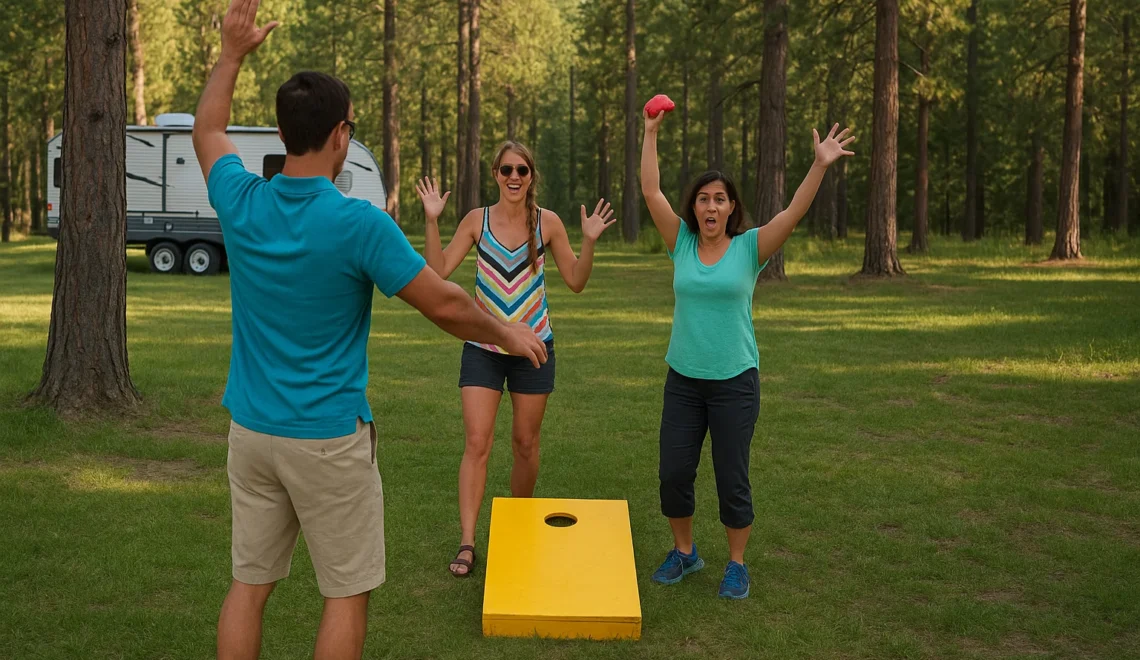
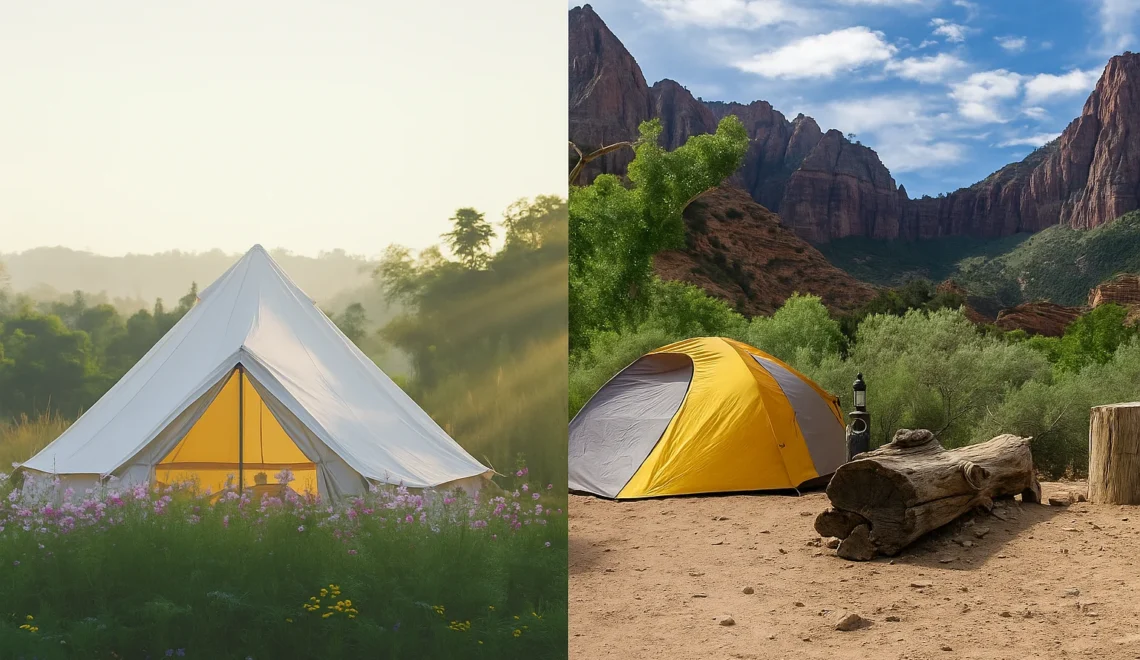
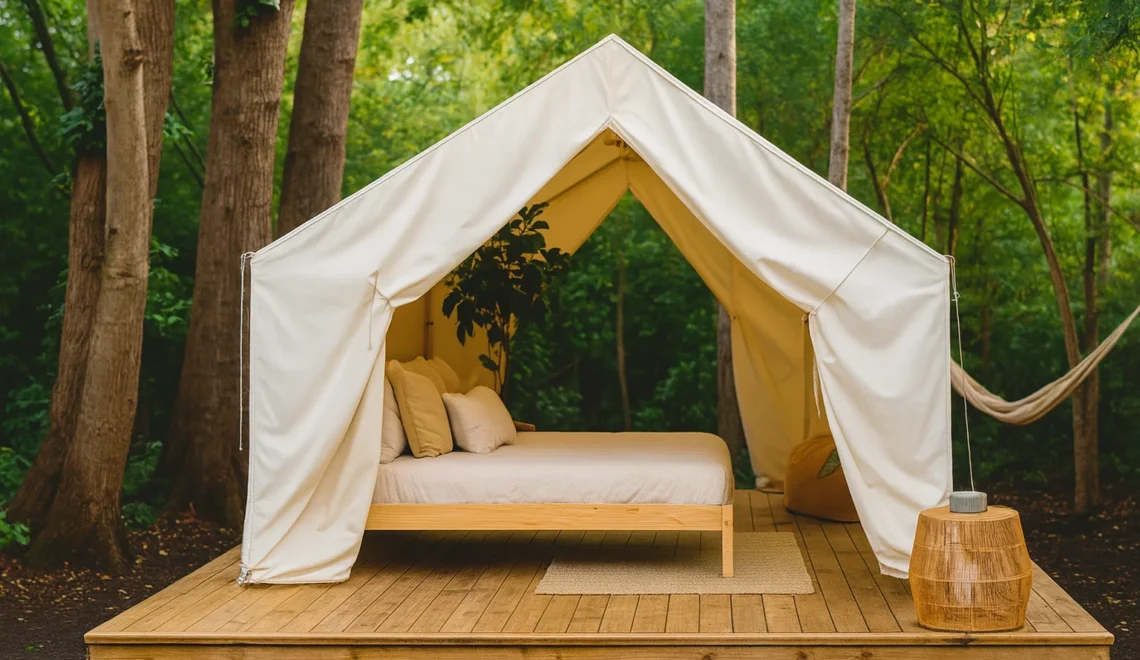
2 comments